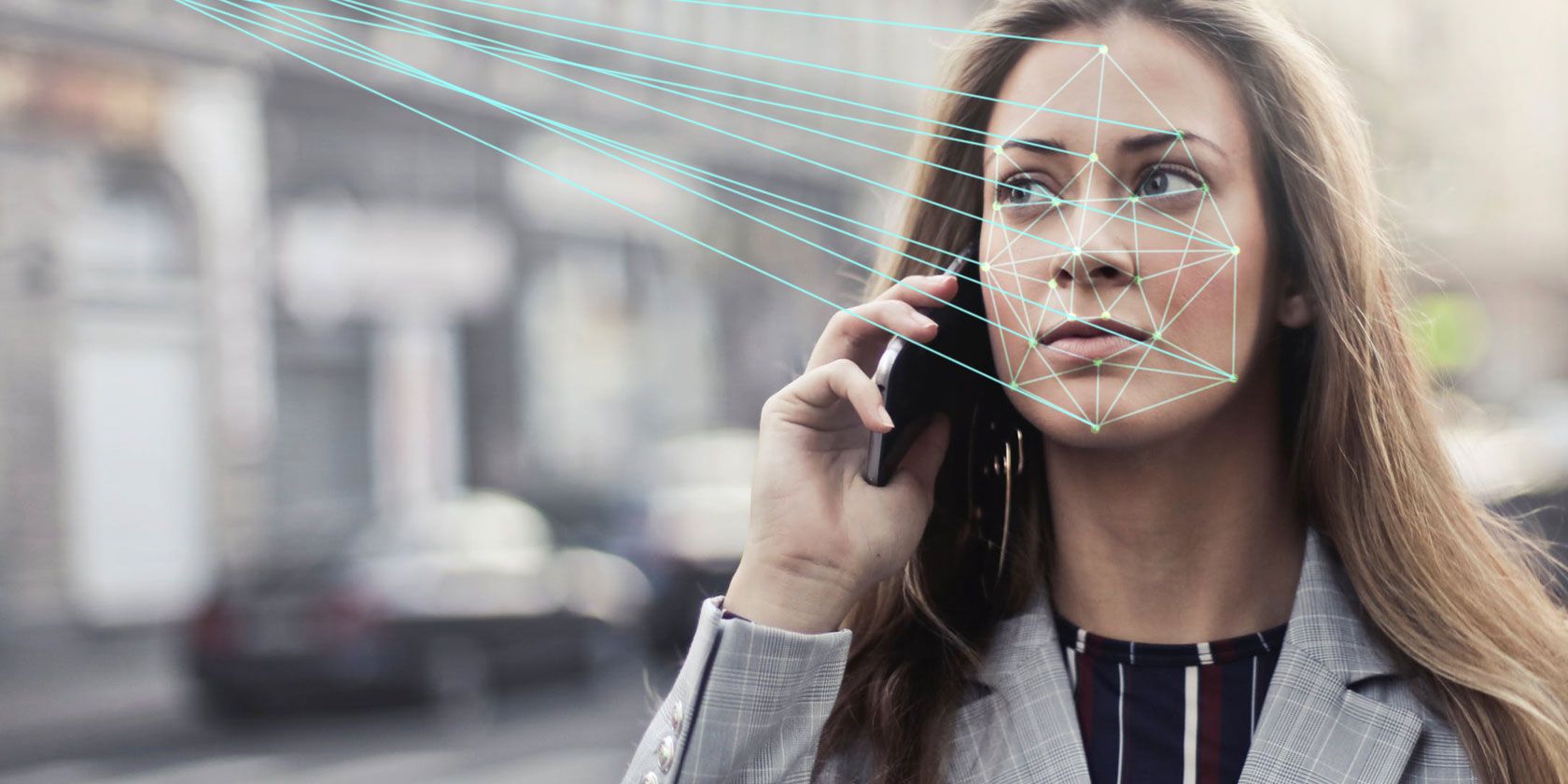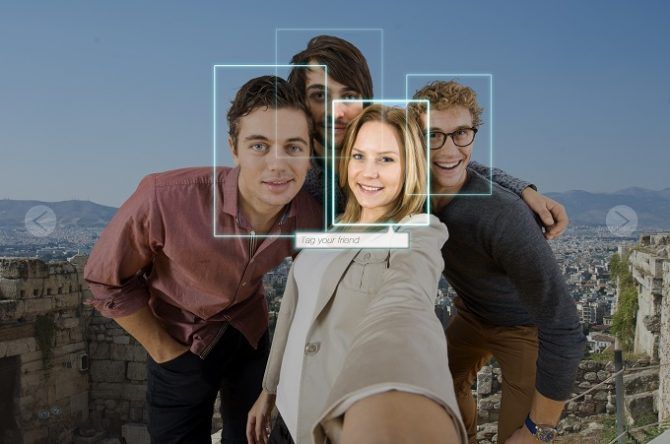
A heated debate continues to rage about the legality of facial recognition software, which is increasingly being used by governments and law enforcement. Not to mention the number of private companies that use some kind of facial recognition.
Many people are concerned about facial recognition software being used to track their movements and the threat to civil liberties that this software poses. While this issue is being debated, there are steps you can take to avoid some facial recognition software, both online and in person.
Why Is Facial Recognition a Concern?

Facial recognition works by analyzing images from photos or videos. Software runs though millions of images to identify features related to human faces. These features can then be measured, such as the distance between a pair of eyes. This means the software is becoming more and more adept at not only recognizing faces in general, but also recognizing specific faces.
This has worried many people who consider it an invasion of their privacy for the government or private companies to be able to track where they go in public places. Plus there are security concerns about whether this information could be leaked or misused in another way.
The city of San Francisco has effectively banned the use of facial recognition software, including by the police. And now similar measures are being considered in the UK as well.
The Accuracy of Facial Recognition Software
There are also concerns about the accuracy of facial recognition software. As the technology is new, it can still make mistakes. That means you could be identified as someone else. Or you could find yourself accused of a crime actually committed by another person.
This is a particular problem for people of color and women. The majority of the training data used for the software so far has been images of white men. So the software is most accurate at recognizing white male faces.
Facial recognition is accurate 99% of the time for white men, but can be prone to errors up to 35% of the time for darker-skinned women.
This means people of color and women have more reason to be wary of facial recognition and to worry about its misuse.
How to Avoid Facial Recognition Online

The first step to avoiding facial recognition online is to take care of where photos of you are uploaded.
Social media sites like Facebook have facial recognition algorithms which analyze photos uploaded to the site to make suggestions for who should be tagged in them. When someone tags you in a photo, they are training the algorithm to identify your face more accurately.
You can untag photos of yourself on Facebook, and also ask your friends not to tag you. It’s a good idea to learn about Facebook photo privacy settings to find out who can see photos of you. You may also want to make your Instagram account private so your photos aren’t widely shared.
1. Disabling Facial Recognition on Facebook
You should be able to disable automatic face recognition on Facebook.
To disable the feature, go to the Facebook website or app and head to Settings. Then check the left-hand menu, where you should find Face recognition just under Languages.
In this menu, click on Edit. From the option Do you want Facebook to be able to recognize you in photos and videos select No from the drop-down menu, then hit Close. This should save your settings and prevent people from tagging you.
However, according to Consumer Reports, not all Facebook users have access to this feature. If it’s not available for you, you will have to send a complaint to the Facebook support team.
2. Use FaceShield When Uploading Photos
You might still want to share photos online, but not to have them visible to facial recognition software. In that case, you can use the FaceShield tool.
FaceShield is a filter that you apply to your photos before you upload them to a website. It makes only minor changes to the photo to the human eye, but the developers say that it makes faces less visible to facial recognition software. It is currently only available as an online tool, but an app is planned for launch soon.
This will help protect your images from some kinds of facial recognition software, but not all of them. It works on software which has been trained on publicly accessible data sets, like those sold to various security companies. But it won’t work for companies like Facebook which use their own proprietary software.
Still, it’s a useful tool to have to somewhat mitigate how visible your photos are to facial recognition.
How to Avoid Facial Recognition In Person
Avoiding facial recognition online is only half the battle, however. You also need to be aware of all the places where facial recognition is happening in person.
Facial recognition software is commonly used for security at large events. Law enforcement use software to monitor protests and demonstrations. It’s also often found in airports and other high-security locations.
The simplest way to avoid facial recognition in person is to obscure your face with a scarf or balaclava. However, this may be against the law in some places and also has the downside of being very conspicuous. There are few better ways to draw attention to yourself in a crowd than covering your face.
3. Use Hair and Makeup to Fool Facial Recognition

An ingenious way to avoid facial recognition is to use a technique like CV Dazzle. This approaches uses bold hair and makeup forms which confuse facial detection software and act as camouflage for your face.
The looks use high contrast makeup, with dark colors on light skin and light colors on dark skin. The hairstyles often partially or completely obscure the nose bridge region between the eyes, which is key to facial identification. The looks are also asymmetrical, as facial recognition software are used to symmetry between the sides of the face.
Applying these techniques takes skill (not to mention a willingness to sport an unusual look) so it’s not for everyone. But if you’re interested, you can download test patterns from the CV Dazzle website or look at online tutorials to learn how to create the effect.
4. Use Clothing to Distract Facial Recognition

Another option is to distract software by overwhelming it with images that look like faces, so it can’t see your face. This is the approach taken by the HyperFace project.
Hyperface uses prints for clothes and other textiles which create “false faces”. Software sees these prints are struggles to differentiate your real face from the simulated faces, making it harder to track you.
These prints aren’t publicly available yet, but in the future they could be a tool against facial recognition.
Avoid Facial Recognition to Protect Your Privacy
Facial recognition technology is a concern to many people. Not only is it a threat to civil liberties in principle, but it is also a new and relatively immature technology. It is not fully accurate and reliable, so it is sensible to be wary of its use by governments, law enforcement, and private companies.
Learn more about how facial recognition is invading your privacy and use these tips to avoid it both online and in person.
Read the full article: 4 Ways to Avoid Facial Recognition Online and in Public
from MakeUseOf http://bit.ly/2Ir759a
via IFTTT

0 comments: